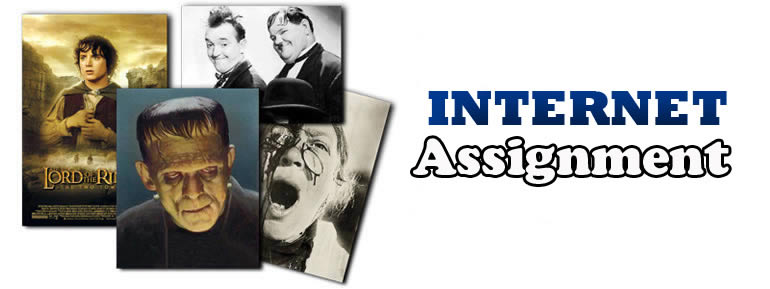
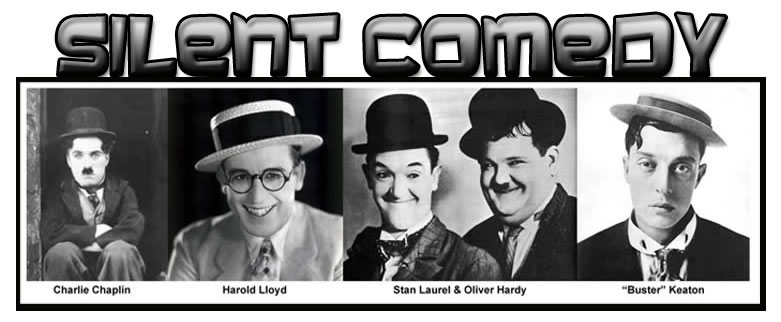
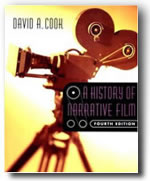 |
We will be studying the work of the greatest comedians of the silent era. They are Charlie Chaplin, Buster Keaton, Stan Laurel & Oliver Hardy, and Harold Lloyd. In order to get an introduction to these artists and the period in which they worked, read pp. 169-185 in your A History of Narrative Film textbook. Make sure you take notes in your notebook that summarize your reading. You will be watching shorts as well as full-length features from these silent comedians. Below you will find a number of questions that relate directly to the films that we are going to watch. |
| Write well-thought out, logical answers to the following questions about the silent comedy films that we will be watching. All answers should be written (NOT TYPED) on the proper answer sheets that you have downloaded. |
| Short Films: |
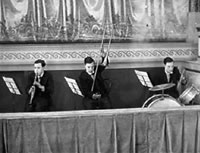 |
Buster Keaton "The Playhouse" (1921) This is a very famous film which features in the first half great camera tricks (which go back to an earlier film pioneer that we studied) and in the second half the feeling that nothing is what at first it appears to be. In a well constructed essay comment on this observation, and show how it is evident in the film "The Playhouse." Download Answer sheet |
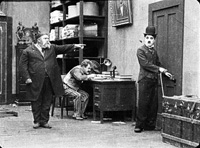 |
Charlie Chaplin "The Pawnshop" (1916) In most of Buster Keaton's films, he portrays a little man trying to put a chaotic universe in order. By contrast, Charlie Chaplin, in "The Pawnshop" is the one who constantly brings chaos to an otherwise orderly establishment. Explain, using examples from the film, how this is evident in this comedy. Download Answer sheet |
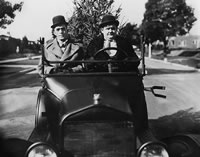 |
Stan Laurel & Oliver Hardy "Big Business" (1929) There is something totally absurd about this comedy about two guys selling Christmas trees in sunny Los Angeles, a job that climaxes in a scene which makes the title of this film extremely ironic. Comment on this observation and how it applies to "Big Business." Download Answer sheet |
| Full-Length Features: |
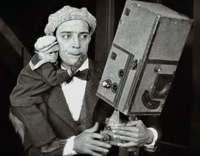 |
Buster Keaton The Cameraman (1928) In the opinion of many, once the Buster Keaton character runs into the monkey, this film simply becomes one of the great comedies of all time. In an essay, describe the events that lead to Buster meeting his little friend, and describe the importance of the monkey in the outcome of the movie. Download Answer sheet |
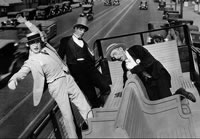 |
Harold Lloyd For Heaven's Sake (1926) A simple story about a rich boy falling in love with a poor girl quickly becomes the background for a very funny silent comedy. Comment how this "gag picture" shoves logic and plot to the background and focuses instead on the art of physical comedy. Download Answer sheet |
Due Dates for each assignment: "The Playhouse" and "The Pawnshop" essays: October 14, 2011 "Big Business" essay: October 18, 2011 The Cameraman essay: October 20, 2011 For Heaven's Sake essay: October 25, 2011 Procedure: It is your responsibility to download each of the answer sheets. Make sure that you print it on 8½ x 11 white paper. Make sure that you adhere to the above schedule. Please, do not type these assignments. Make sure that your work is written in either black or blue ink. NB: Any deviation from the above guidelines will result in a loss of points. No late assignments will be accepted. Any work handed in late will receive a grade of 0%. Point Value: The short film essays are worth 20 points each, the full-length feature essays are worth 40 points each. |
| Click Here for the Next Silent Comedy Assignment |
| Go Back to Elements of Cinema HomePage |